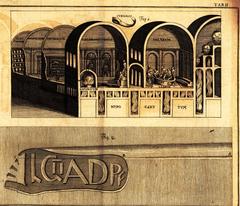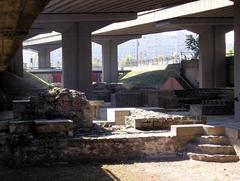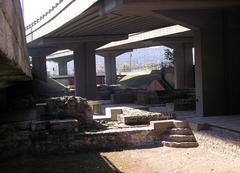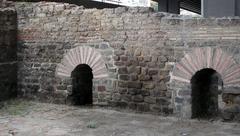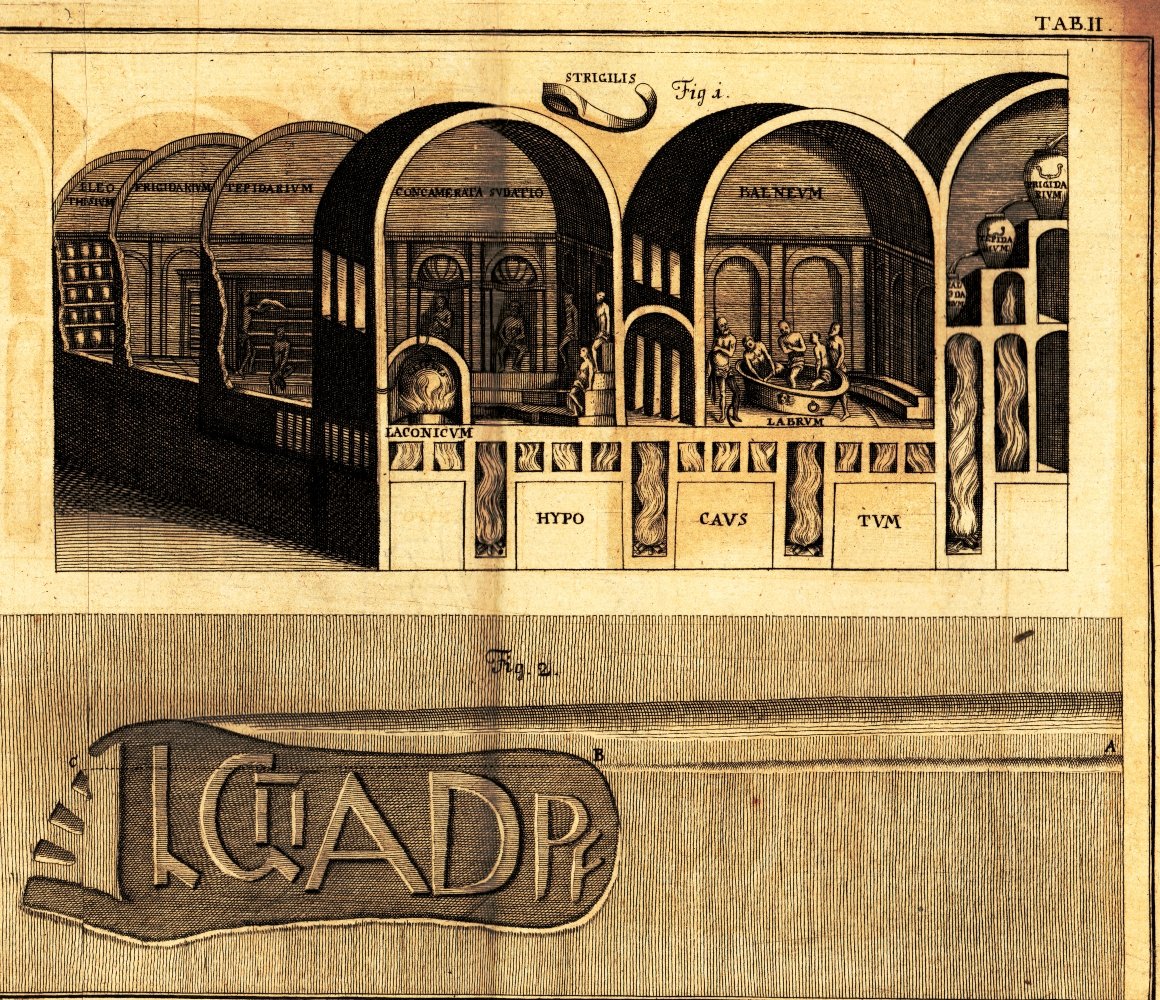
Fürdőmúzeum Budapest: Comprehensive Guide to Visiting Hours, Tickets, and Historical Insights
Date: 03/07/2025
Introduction
Budapest, often celebrated as the “City of Baths,” boasts a thermal bathing heritage rooted in Roman antiquity and enriched by centuries of cultural evolution. The Fürdőmúzeum (Bath Museum) stands as a gateway to this legacy, preserving the story of public bathing from ancient Aquincum through the Ottoman era to modern spa traditions. Situated in the historic Óbuda district, the museum provides a unique, immersive experience with archaeological remains, interactive exhibits, and insights into the social and therapeutic significance of bathing. This guide offers everything you need to plan your visit—covering history, opening hours, tickets, accessibility, and practical tips.
For the most current details, consult the Budapest History Museum official website and the Culture of Thermal Baths portal.
Table of Contents
- Historical Overview: Roman Origins to Modern Spa Culture
- The Birth and Role of the Fürdőmúzeum
- Visiting Information
- Architectural Features and Museum Layout
- Cultural and Social Significance
- Nearby Attractions and Suggested Itineraries
- Visitor Tips and Practical Advice
- FAQs
- Conclusion
- References
Historical Overview: Roman Origins to Modern Spa Culture
The origins of Budapest’s bath culture lie with the Romans, who established the city of Aquincum in the 1st century AD (budapest.net). Recognizing the value of natural hot springs, they built extensive bath complexes, including the military thermae now preserved at the Fürdőmúzeum. These baths served hygienic, social, and strategic functions, and remnants such as hypocaust systems and mosaics offer a glimpse into this advanced society (budapest-tourist.info).
During the Ottoman occupation (1541–1686), public bathing was revitalized with the construction of iconic bathhouses like Rudas and Király, featuring domed ceilings and communal pools (thermal-baths-budapest.com). The Habsburg era and 19th-century urban development saw the rise of grand spa complexes, such as Széchenyi and Gellért Baths, cementing Budapest’s international reputation as a spa capital (wikipedia.org).
The Birth and Role of the Fürdőmúzeum
Established to preserve Budapest’s spa heritage, the Fürdőmúzeum presents artifacts from Roman, Ottoman, and modern periods (thermal-baths-budapest.com). The museum’s exhibits include archaeological remains, period attire, medical instruments, and archival photographs, providing a comprehensive narrative of the bathing tradition’s evolution (factualamerica.com).
Visiting Information
Location and Access
- Main Site: Flórián tér, District III (Óbuda), Budapest, Hungary (kerulethirdetoje.hu)
- Public Transport: Accessible via tram lines 1 and 17, several bus routes, and a short walk from Flórián tér.
Opening Hours
- Regular Hours: Tuesday–Sunday, 10:00 AM–6:00 PM
- Note: Hours may vary seasonally or on holidays. Always check the official website before your visit.
Tickets and Admission
- Entry: Often free of charge, or included with the Budapest History Museum’s combined ticket (covers several sites including Aquincum Museum).
- Discounts: Available for students, seniors, groups, and Budapest Card holders (budapestbylocals.com).
- Booking: Advance purchase is recommended during peak periods. On-site ticketing is available.
Accessibility
- Mobility: The museum is partially accessible; some uneven ground and steps exist. Contact the museum in advance for details (motion4rent.com).
- Public Transport: Low-floor buses and tramlines serve the area; Metro line 4 is fully accessible.
Guided Tours and Languages
- Guided Tours: Can be booked via the museum or Aquincum Museum. English and Hungarian tours available.
- Information: Exhibits are labeled in Hungarian and English; translation apps or guided tours are recommended for deeper understanding.
Photography Policy
- Photography: Permitted without flash; tripods and flash may be restricted to protect artifacts.
Architectural Features and Museum Layout
The Fürdőmúzeum is located on the site of a Roman legionary bath complex. Key features include:
- Apodyterium (Changing Room)
- Frigidarium (Cold Bath)
- Tepidarium (Warm Room)
- Caldarium (Hot Bath)
- Sudatorium (Sweating Room)
- Nymphaeum (Fountain/Niche)
- Hypocaust Heating System
- Latrina (Toilets)
Visitors follow the typical Roman bathing sequence via interpretive walkways and panels. Artifacts and scale models illustrate daily life in Aquincum (hu.wikipedia.org).
Cultural and Social Significance
The Fürdőmúzeum highlights how bathing shaped Budapest’s urban and social landscape, from ancient communal rituals to modern wellness culture (thermal-baths-budapest.com). The museum hosts special exhibitions, educational workshops, and cultural events, deepening appreciation for Hungary’s spa legacy.
Nearby Attractions and Suggested Itineraries
- Aquincum Museum and Archaeological Park: Explore more extensive Roman ruins and interactive displays (thecrazytourist.com).
- Óbuda Historic Center: Baroque streets, local restaurants, and vibrant squares.
- Roman Amphitheater: Short walk from the museum.
- Danube Promenade: Scenic strolls along the riverbank.
Suggested Itinerary: Start at the Fürdőmúzeum, continue to the Aquincum Museum, enjoy lunch in Óbuda, and visit thermal baths like Rudas or Széchenyi in the afternoon.
Visitor Tips and Practical Advice
- Best Times: Weekday mornings for a quieter visit.
- Dress: Wear comfortable shoes; some areas are outdoors or semi-covered.
- Packing: If combining with a bath visit, bring swimwear, towel, flip-flops, and a waterproof case for electronics (nomadicmatt.com).
- Currency: Pay in forints (HUF); cards accepted at most locations (lonelyplanet.com).
- Language: English is spoken at most sites; knowing a few basic Hungarian phrases is helpful.
- Facilities: Restrooms onsite; cafes and shops in the vicinity.
- Souvenirs: Museum shops offer unique bath-themed gifts.
FAQs
Q: What are the Fürdőmúzeum visiting hours?
A: Generally Tuesday–Sunday, 10:00 AM–6:00 PM. Always confirm online.
Q: Do I need to buy tickets?
A: Admission is typically free or included with the Budapest History Museum ticket. Check for special exhibitions or group rates.
Q: Is the site accessible for visitors with mobility issues?
A: Partial accessibility; contact in advance for specific accommodations.
Q: Are guided tours available?
A: Yes, in English and Hungarian. Book in advance.
Q: Can I take photos?
A: Yes, but avoid flash and tripods.
Q: What is the best way to reach the museum?
A: Public transport to Flórián tér by tram or bus. Metro line 4 and accessible taxis are also options.
Conclusion
The Fürdőmúzeum offers a captivating lens into Budapest’s ancient and ongoing spa culture. By preserving and interpreting the legacy of Roman, Ottoman, and modern baths, the museum provides visitors with a rich historical and cultural experience. Thoughtfully curated exhibits, accessible facilities, and proximity to other heritage sites make it a standout among Budapest’s historical attractions. Plan your visit with attention to hours, tickets, and accessibility, and consider enhancing your trip with the Audiala app for guided tours and updated information.
References
- Budapest History Museum Official Site
- Culture of Thermal Baths
- History of Budapest
- Budapest Tourist Info: History
- Wikipedia: History of Budapest
- Kerület Hirdetője: Fürdőmúzeum
- 10 különleges múzeum Budapesten
- Documentaries about Budapest’s Thermal Baths
- Budapest in July Events
- 25 Best Things to Do in Budapest
- Budapest Spa Guide
- Guide Budapest in Wheelchair
- Tips for Visiting Budapest
- Budapest Itinerary
- Things to Know Before Traveling to Budapest
